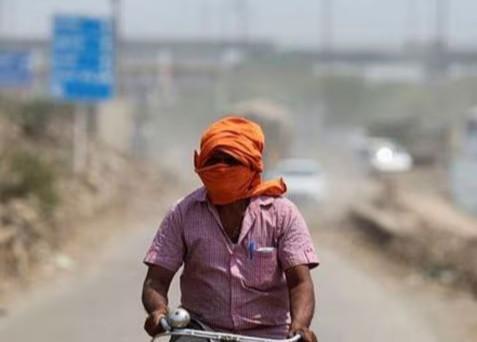
Extreme Heat Endangering Health & Productivity of Workers: Report
As the world grapples with the devastating effects of climate change, a recent report by the World Health Organisation (WHO) and the World Meteorological Organisation (WMO) has highlighted a pressing concern: the impact of extreme heat on the health and productivity of workers. According to the report, worker productivity drops by 2-3% for every degree above 20°C, and manual workers in agriculture, construction sectors, and vulnerable populations like children and the elderly in developing countries are particularly at risk.
The report, which was released on [date], has sent shockwaves across the globe, as it highlights the alarming consequences of extreme heat on the well-being of workers. Heat-related illnesses, such as heatstroke, dehydration, and kidney dysfunction, are just a few of the many health risks associated with extreme heat. These risks can have long-term consequences, including disability, reduced quality of life, and even death.
The report cites several factors that contribute to the increased risk of heat-related illnesses among workers. For instance, workers in agriculture, construction, and other manual labor-intensive industries are more likely to be exposed to extreme heat due to the nature of their work. Additionally, vulnerable populations like children and the elderly in developing countries may not have access to proper healthcare facilities or adequate shelter, making them more susceptible to heat-related illnesses.
The economic implications of extreme heat on worker productivity are also significant. As the report notes, a 2-3% drop in productivity can have a substantial impact on the bottom line of businesses and economies. Moreover, the long-term consequences of heat-related illnesses can lead to increased healthcare costs, reduced worker output, and decreased economic growth.
So, what can be done to mitigate the effects of extreme heat on workers? The report offers several recommendations, including:
- Implementing heat stress prevention measures: Employers can take steps to prevent heat stress by providing workers with regular breaks, ensuring adequate hydration, and implementing cooling measures such as fans or air conditioning.
- Conducting heat stress risk assessments: Employers should conduct regular risk assessments to identify workers who are at highest risk of heat stress and take steps to mitigate those risks.
- Providing heat-related training: Workers should receive training on heat-related illnesses, including symptoms and treatment options, to ensure they know how to respond in case of an emergency.
- Encouraging heat stress awareness: Governments, employers, and communities can work together to raise awareness about the risks of heat stress and promote heat stress prevention measures.
The report also emphasizes the need for governments to take action to mitigate the effects of extreme heat on workers. This includes implementing policies and regulations that protect workers from heat-related illnesses, investing in heat stress prevention measures, and providing resources and support to vulnerable populations.
In conclusion, the report by the WHO and WMO highlights the urgent need for action to address the impact of extreme heat on workers. By implementing heat stress prevention measures, conducting heat stress risk assessments, providing heat-related training, and encouraging heat stress awareness, we can reduce the risk of heat-related illnesses and protect the health and productivity of workers. As the world continues to grapple with the consequences of climate change, it is essential that we prioritize the well-being of workers and take action to mitigate the effects of extreme heat.
Source:
https://repository.inshorts.com/articles/en/PTI/45d9bd2d-ff57-417c-9e5f-831344bb34b0






